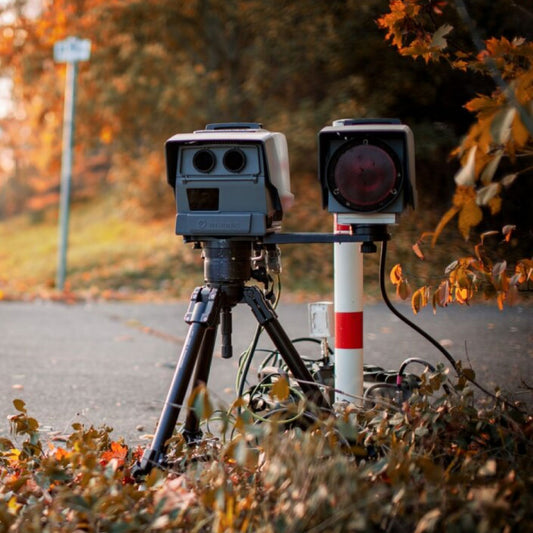Curious about radar detectors but don't know where to start? You've come to the right place! Here we will cover the basics of radar detection to help you understand how these devices work and why they've become popular among drivers.
Highlights
- Radar detectors are electronic devices that alert drivers to speed-measuring radar used by law enforcement.
- These devices work by detecting radio waves in frequencies commonly used by police radar guns (X-band, K-band, and Ka-band).
- Radar detectors are legal in some Canadian provinces (Alberta, Saskatchewan, British Columbia) but illegal in most others.
- In provinces where radar detectors are illegal, police use Spectre RDD (Radar Detector Detector) technology to identify vehicles using these devices. Expect a hefty fine if caught with one of these detectors where illegal, not to mention risk the detector being confiscated.
What is a Radar Detector?
A radar detector is an electronic device that alerts drivers to the presence of speed-measuring radar guns used by law enforcement. These devices work by detecting the radio waves emitted by radar guns, giving drivers advance warning to check their speed.
How Do Radar Detectors Work?
Radar detectors operate on a simple principle: they scan for radio waves in frequencies commonly used by police radar guns. When they detect these signals, they alert the driver through visual or audio cues.
Different Types of Radar:
- X-band: An older technology, much less commonly used today
- K-band: Widely used by police across the country. These alerts can often be mistaken for security systems (from banks and liquor stores), or most commonly from In-Vehicle Technology systems (blindspot monitoring interference) from nearby vehicles.
- Ka-band: The most modern and prevalent type of radar used today. These alerts are almost always police enforcement.
- Lidar (Laser): Highly precise laser-based speed detection, very popular throughout Canada (see separate post on Lidar here)
Features to Look For:
- Range: The distance at which the detector can pick up signals
- False Alert Filtering: Ability to distinguish between actual radar guns and other sources of similar frequencies
- GPS: Some advanced models use GPS to remember false alert locations
- Smartphone Connectivity: For updates and shared alerts from other users
Are Radar Detectors Legal?
The legal landscape varies by region here in Canada. While these devices can be helpful tools for drivers, they're not welcome everywhere.
Provincial Restrictions
Radar detectors are prohibited by provincial laws and highway acts in several regions across Canada. These include:
- Manitoba
- Ontario
- Quebec
- New Brunswick
- Nova Scotia
- Prince Edward Island
- Newfoundland
- All northern territories
Enforcement Technology
Law enforcement in these provinces isn't just relying on the honour system. They've equipped themselves with advanced technology to catch those who might try to skirt the rules. Enter the Spectre RDD (Radar Detector Detector).
The Spectre RDD is a sophisticated device that can identify the presence of a radar detector in a vehicle. It works by picking up on the small amount of electromagnetic emission (leakage signal) that radar detectors produce, even when they're not actively alerting.
This means that even if your radar detector isn't going off, it could still be detected by law enforcement equipped with a Spectre RDD. The consequences of being caught with a radar detector in these provinces can include costly fines and confiscation of the device.
Always remember to check and adhere to local laws regarding radar detectors before using one. The safest approach is to follow posted speed limits and drive responsibly, regardless of whether you're using a radar detector or not.
Why Use a Radar Detector?
While not a license to speed, radar detectors can help you:
- Stay aware of speed monitoring zones
- Alert you of upcoming construction zones emitting K-band warning signals
- Avoid unexpected speed traps
- Potentially save on costly speeding tickets
Remember, the safest driving is always within the posted speed limits. A radar detector is a tool for awareness, not an excuse for reckless driving.
Stay tuned for more in-depth posts about specific models, features, and tips for choosing the right radar detector for your needs!




